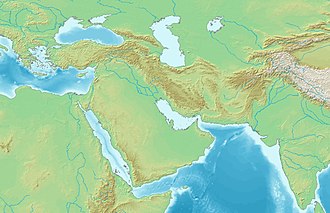 | |
| Coordinates | 36°15′44″N46°41′16″E / 36.26222°N 46.68778°E |
|---|---|
| Type | Hoard |

The Ziwiye hoard is a treasure hoard containing gold, silver, and ivory objects, also including a few gold pieces with the shape of a human face, that was uncovered in a plot of land outside Ziwiyeh castle, near the city of Saqqez in Kurdistan province, Iran, in 1947.




















